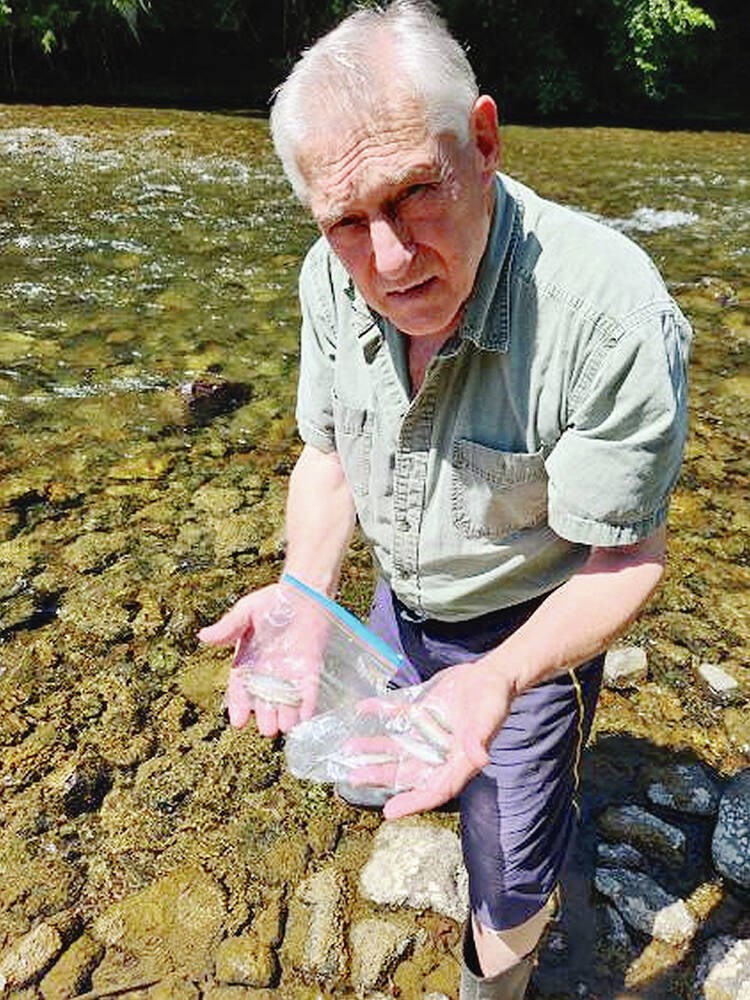A prolonged drought and sustained heat were behind a mass die-off of fish this summer in the Cowichan River, says a new report from the Department of Fisheries and Oceans.
Samples of dead salmon and trout fry discovered by swimmers below Skutz Falls in late July showed lesions associated with “stressful environmental conditions,” including low oxygen and high pH levels in the water, said the report. “This can potentially be caused by the decay of algal growth, which appears to be more prevalent than usual this year.”
It said excess algae growth is often related to low river flows combined with hot, dry weather and the presence of nutrients such as nitrogen and phosphorus.Environmental stressors can also make the fish more susceptible to infectious disease.
There were no estimates on the number of fish that may have died during heat waves that started in May. “It’s unprecedented,” said Tom Rutherford, executive director of the Cowichan Watershed Board, which is led by Cowichan Tribes and local governments in the watershed .
“We’ve never had a fish kill of this magnitude in my lifetime. It’s something we’ve been dreading would happen, so it’s not that surprising that we’re here.”
Rutherford said coho salmon and steelhead trout that spend a full year in the Cowichan before moving to the ocean took the brunt of the kill, but adult species of rainbow, cutthroat and brown trout also suffered losses.
With water flows so low — down to about 4.5 cubic metres per second — the fish tend to migrate to pools where the water temperature heats up, oxygen levels drop and algae blooms form, said Rutherford.
Joe Saysell, who has lived on the Cowichan all his life, said the fish kill was the worst he’s ever seen, calling a 6.5-kilometre stretch of river “a dead zone.”
The province cancelled a planned angling opening last month over concerns about fish stocks.
Rutherford said the perilous state of the river has been known for years, with more than a decade of prolonged drought in the watershed. “We’ve been dancing on a knife blade for quite some time and now we’ve fallen off on the wrong side,” said Rutherford.
The river flows about 50 kilometres from Cowichan Lake to the estuary at Cowichan Bay. Concerns over low flows are even more heightened as returning chinook salmon have arrived and are massing at the river mouth ready “to scrape themselves upstream” for spawning, said Rutherford.
An operation to pump water out of Cowichan Lake was announced this week by Paper Excellence, which runs the pulp mill at Crofton and the weir that regulates flows from the lake into the river system.
But Rutherford said the pumps aren’t expected to be turned on until next week, and it may not be enough to get the river up to a flow of seven cubic metres a second to meet the needs of fish runs. He said there’s also a danger of drawing lake levels to below already record lows, as it also provides habitat around shorelines, which could recede more with no measurable rain in the forecast.
Everyone agrees the weir system at the lake has to be raised to better control flows, because “the river’s on life support,” said Rutherford. Rutherford said all stakeholders — First Nations, the Cowichan Valley Regional District, industrial and farming users and property owners at Lake Cowichan — agreed to a lake-use plan in 2018, but there are still hurdles. That plan included raising the weir system by 70 centimetres, a project with an estimated price tag of $25 million to $30 million.
Cowichan Tribes has received about half the funding to raise the weir from the federal government, said Rutherford, but the groups are still awaiting matching funds from the province. The other dangling issue is determining whose job it will be to operate the weir and regulate flows.
>>> To comment on this article, write a letter to the editor: [email protected]



